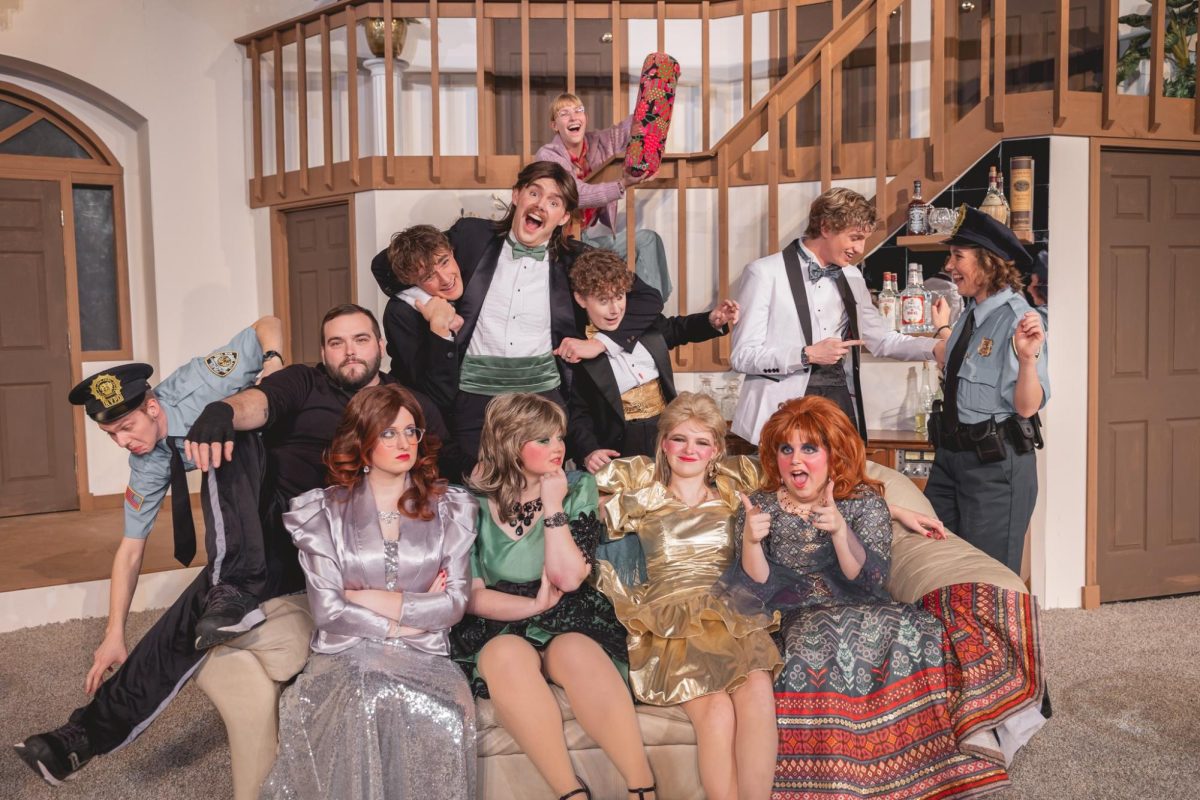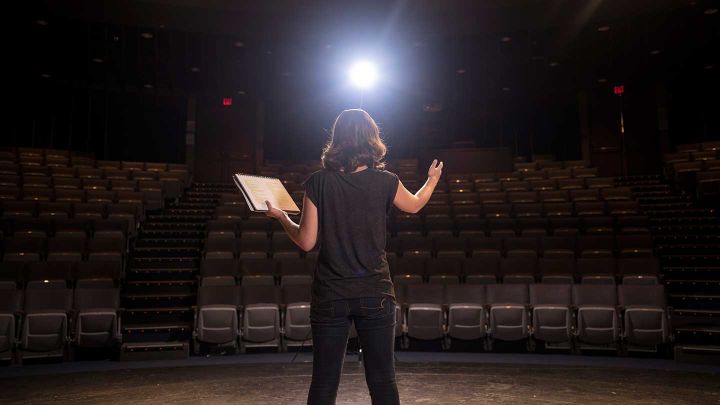The words are so familiar to us: “This is my body, broken for you,” says the pastor, the priest or the friendly elder handing us a piece of bread. “This is the blood of Christ, shed for you,” they say afterwards, this time reaching for the cup. We hear the words so often in church it can be easy to lose their significance. We slip into the ritual, simply going through the motions of the ceremony. “Thanks be to God,” we know is meant to be our response.
But what do those words really mean?
This question is at the heart of Dave Ellens’ new play, “This Is My Body,” which opened in the Lab Theater at Calvin last week Friday. A piece of verbatim theater, the actual script of the play is a series of interviews conducted by Ellens over this past summer. While the words are directly transcribed from his recordings, five actors interpret them and name changes serve to keep the true identity of the voices hidden. Calvin students will recognize previous verbatim theater plays directed by Ellens, which were centered around themes such as sexuality, faith and technology. Friends of Chase Froese will also appreciate the dedication of the play to her memory.
This play, about communion and embodiment, brought unique challenges to the verbatim theater production. The actors were tasked with representing the idiosyncrasies, mannerisms and — as Ellens stated in a talkback after the premiere — “the spirit” of the person they are representing: in one case a person with disability. This required a tremendous amount of talent and emotional energy from the actors, which they delivered from the moment the lights first shined.
The first actress we were introduced to was “Hailey,” played by McKenna DeWyn. While she speaks in the spotlight, the audience is dimly aware of the other four actors, sitting silently in seats arranged around the dark stage. Hailey’s energy and sassy nature are immediately infectious, which makes it all the more painful when she later tells of a case of sexual assault, uncharacteristically growing slow and quiet.
While much of the energy of the first act feels propelled by her story, the spotlight often changes back and forth between her and two other characters, all sharing stories about a lack of control over their own bodies. For instance, the second speaker the audience is introduced to is “Kendra,” played by Megan Nollet. Fluctuating between overeating and anorexia, Kendra’s story reaches a particularly powerful moment when she reveals a reluctance to take communion, not because of a faith-based motive, but in order to avoid the calories. “I knew it was a silly thought because I knew that a small little wafer like that wasn’t going to affect anything, anything, but I remember not wanting to eat that wafer. It wasn’t a part of my plan.” While perhaps Kendra’s character seemed the least tied to the overall theme of embodiment and communion, this moment struck an important note in the play, marrying issues resulting from deep insecurity and the taking of communion.
One of the chairs on the stage was a wheelchair. Actor Evan Koons plays “Mike,” a character born with Muscular Dystrophy. The observant and somewhat spitfire nature of Mike is wonderfully portrayed by Koons, who convincingly conveys a complex character without the use of his arms or legs. While Mike’s opposites, Hailey and Kendra, struggle to keep control over their bodies in a more emotional and spiritual sense, Mike experiences a much more literal loss of control. He takes us through a lifetime of losing more and more movement in his limbs, how he came to terms with his identity as a person with disability and his experiences of embodiment. While Kendra is afraid to take communion and Hailey shares her own anxieties about the ceremony, Mike’s contrasting experience of being fed the bread and wine by a friend is captivating and — unexpectedly — hilarious. “Scott and I never get it right when we’re up there. … It’s very complicated, so we’ll laugh and we grade ourselves, ya know, like, we go back to our seats and we’re like eh, maybe a C-minus.” Amusing as his story is, Mike calls attention to the intimacy of being fed the communion, an intimacy lost once taking the communion becomes nothing more than an expected part of the service.
In the first act, the stories of the three actors seem to work in concert with each other. Their stories rise and give way with each change of the spotlight, adding a new viewpoint or experience to the communion and the idea of embodiment. This is not true with the second act, where we are introduced to the two other characters who, until now, have been silent throughout the play.
While Hailey, Kendra and Mike are all very much concerned with their own particular life experiences and challenges, John and Ann share stories centered on death. We learn that Ann, played by Kelly Elders, attended 16 funerals by the time she herself was 16. As she relates these experiences, the spotlight cuts away to John, played by Doug Chu. John shares stories of death in his own life — mostly the suicide of a friend and teacher he was particularly close to. Both characters — almost in tandem — reveal that these losses led them to think seriously about their own deaths.
The pairing is brilliant because of what happens next. For the most part, Ann moves away from her own story and instead shares some important reflections. She shares her thoughts on injustice, describing a crisis of faith after seeing concentration camps during an abroad trip. But after this crisis, she goes on to eloquently explain why faith, and why communion, holds so much importance for her. “If I don’t have something to make sense of all the death in my life or all the peripheral death, if I don’t have any hope that new life will spring from that, like, I, I might as well be dead,” Ann says in one of the most stunning lines of the play.
The lights dim as the play ends, save for a warm light over the sculptural centerpiece of the stage: a cascade of holy wafers and a single stream of wine flowing into a cup. Ellens has spun together a thoughtful and engaging reflection on the significance of not only the communion, but of us — flawed individuals approaching the communion — as well.
“This Is My Body: Stories of Brokenness and Communion” shows this weekend, February 25-27, in the Lab Theater at 7 p.m. Showings are free and unticketed.






